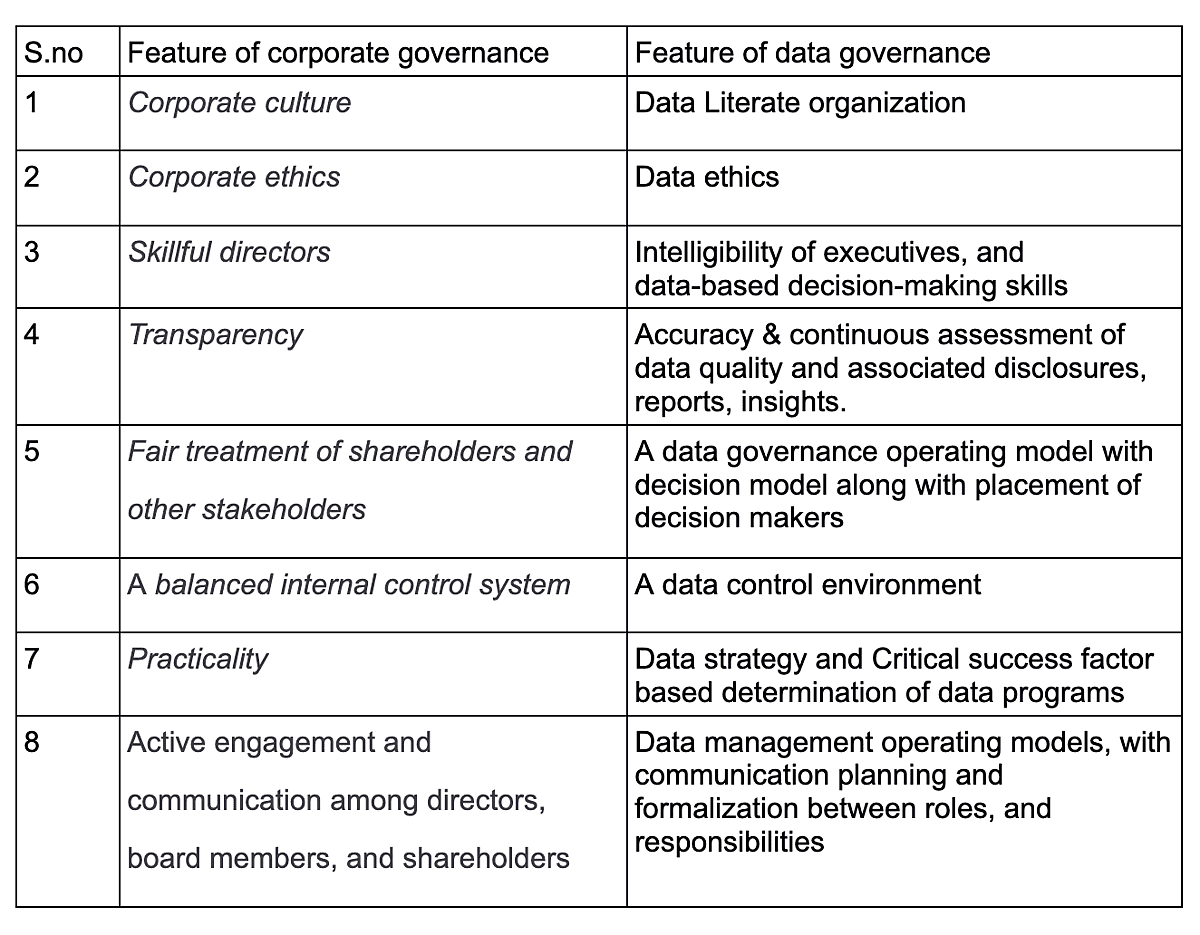Opinion & Analysis
How To Find the Right Data Governance Model and Derive Principles From Corporate Governance
Written by: Tejasvi Addagada
Updated 4:27 AM UTC, July 10, 2023

Data governance has received much attention in the academic and practitioner communities for the past 15 years. With the rise of digital transformation, big data, and data-driven decision-making, it has become essential for organizations to ensure that data is formally and actively managed for quality, confidentiality, security, and control of their data. Data governance helps organizations comply with regulatory requirements, protect sensitive information, and make informed business decisions. The increased focus on data governance reflects the increasing recognition of data’s importance in organizations. This is because data is a corporate asset, like people and technology, and must be governed. Further, there are several regulations and standards — such as the General Data Protection Regulation (GDPR), Health Insurance Portability and Accountability Act (HIPAA), Payment Card Industry Data Security Standard (PCI DSS), Sarbanes-Oxley Act (SOX), Basel III, MiFID, etc. — that have contributed to the increasing importance of data governance.
Compared to the recent concept of data governance, IT governance has evolved from the initial concept of corporate governance. In the past year, interest in governing data has increased due to the evolution of modern data stacks, board-based data decisions, cloud adoption, and improved data literacy across the globe. Several studies have been conducted on determining ideal corporate governance and IT governance frameworks, but the same cannot be said for data governance.
However, it has been debated that there might not be one model that fits the needs perfectly. Like organizational management and IT governance, data governance functions are critiqued for their assumptions of relation with fit and performance along with rational actors and design parameters such as organizational structure. As organizations formalize data strategy and governance functions assess, direct, and monitor the implementation of data objectives, there can be more standard approaches to data governance.
What is the core focus of data governance in an organization?
The 1994 Hawley Committee report first identified data as an asset, defining it as "data that is or should be documented, and that has value or potential value.” Data governance focuses on the decision rights related to the data assets and the network of relations to ensure data quality, consistency, usability, security, privacy, and availability. By standardizing and formalizing processes, roles, associated responsibilities, and technology, this direction can be implemented to govern data. Data management is a comprehensive set of processes and practices aimed at maximizing the value of data as an organizational asset while controlling and mitigating risk.
Is data management different from data governance?
It is critical to distinguish the term “governance” from “management” in the context of data governance. It should be noted that the principal difference is that governance refers to the decisions that must be made and who must make them. This is to ensure effective resource allocation and management of data operations. On the other hand, data management involves implementing the decisions that arise from assessing and monitoring either existing controls or the environment, including advancements in technology and the market. The activities required for data governance can be distinguished from those needed for data management because management is influenced by governance. Data governance is oversight of data management activities to ensure that policy and ownership of data are enforced in the organization. The emphasis is on formalizing the data management function along with the associated data ownership roles and responsibilities. In addition, governance ensures that data management as a service is sustainable as a function, enabling active data management.
How does corporate governance influence data governance in an organization?
To give a perspective on data governance, let’s review the evolution of corporate governance. In the economic debate concerning the impact of corporate governance on performance, there are basically two models — the shareholder model and the stakeholder model. In its simplest sense, the shareholder model refers to senior management’s formal accountability to shareholders. According to this model, a corporation’s primary responsibility is to maximize shareholder value, typically through maximizing profits and returns on investment.
On the other hand, the stakeholder model emphasizes the importance of sustainable business practices and views corporations as more than just financial entities. In this model, corporations have a duty to consider the interests of all stakeholders, including shareholders, employees, customers, suppliers, and the wider community, when making decisions. Furthermore, the stakeholder model of corporate governance describes the formal and informal relationships that support the common good that can have better long-term performance.
Data ownership has always been perceived to be the core tenet of the data governance operating model that helps drive decisions with accuracy. Recently, we have seen variations in the data ownership models — including the information technology, business divisions, and data office — federated between business and IT. A stewardship model can also be perceived as another tenet of data governance that’s an evolution of the data ownership model. While data ownership can be more formalized, steward identification can be an alternate approach to imparting accountability across the organization that can impact long-term data value. Certain distinctive features of a good data governance framework aligned with corporate governance are specifically:

How to Find the Right Data Governance Model and Derive Principles from Corporate Governance
To conclude, with each passing year, data is becoming more visible on corporate agendas and also increasing shareholder expectations about creating or protecting customer interests. As data-based technology evolved during the big data era, initiatives have resulted in substantial revenue growth and cost savings for many organizations. According to some studies, most organizations (between 60%-70%) that have invested in Big Data have reported that they have derived some value from their initiatives. Every aspect of social, economic, and citizen interaction with government and corporations has been transformed by data in the last decade.
A growing number of citizens are demanding increased accountability from their governments, health care systems, and nonprofits. Also, shareholders expect corporations to disclose accurate information to improve investment decisions. Organizations can manifest their business objectives with practical measures by aligning data governance principles and frameworks with corporate governance.
About the Author
Tejasvi Chandrarkar Addagada is a data management and data governance expert, a best-selling author, and a data practitioner and consultant who helps Fortune 500 firms build and optimize data management and governance solutions. He provides a wide range of services, including data strategy, risk management, app service rationalization, digital transformation, and process excellence. Addagada has expertise in consumer banking, commercial banking, capital markets, and health care sectors. He leverages his knowledge and data, people, process, and technology capabilities as a process and domain consultant to transform major consumer services. He is an early data provocateur in the industry, connecting with many thought leaders in standardizing multiple data practices.
Addagada published his latest book, “Data Management and Governance Services: Simple and Effective Approaches,” in 2017, which held pre-booking records in this space. He is an abstract painter and enjoys spending time with his family.


